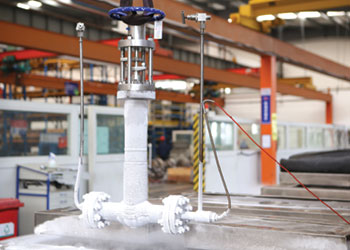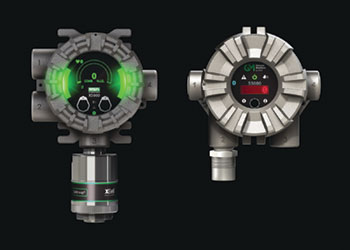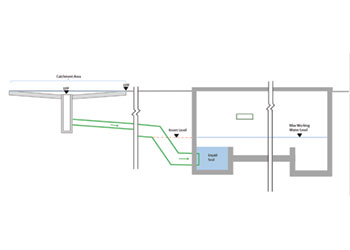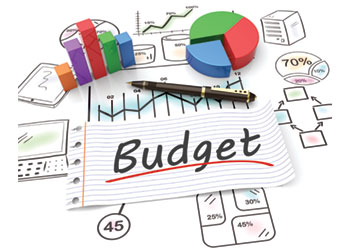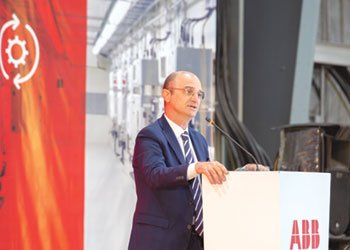
 Klehm ... calling on governments to play their role in addressing climate change
Klehm ... calling on governments to play their role in addressing climate change
By partnering, governments and industries can align their objectives, leverage their respective strengths, and accelerate the transition to a low-carbon economy, Bill Klehm*, Chairman and CEO of eBliss, tells OGN
America’s car culture was birthed by government and industry working together. Sculpted by an American desire for the personal freedom to go anywhere at any time and made possible through Henry Ford’s assembly line, America’s government was incentivised to develop mass transit and cities with a population of car drivers in mind.
Today, climate change has emerged as one of our most pressing global challenges, with far-reaching implications for the environment, economy, and society. As the consequences of climate change become increasingly evident, it is imperative that governments and industries join forces to combat this existential threat.
Back in April, the Biden Administration released new Environmental Protection Agency (EPA) guidelines that would set new federal vehicle admission standards and ease the transition to clean electric vehicles.
The EPA has projected that under these new guidelines, EVs could account for 67 per cent of all light-duty vehicle sales by 2032 depending on manufacturer compliance.
There has already been much scrutiny of the EPA’s new guidelines. Recent reports show that even if manufacturers meet the government's guidelines, 80 per cent of all vehicles on the road would still run on gasoline or diesel fuel.
The Alliance for Automotive Innovation, which represents General Motors, Ford, and Toyota has stated the EPA’s new standards are 'neither reasonable nor achievable in the time frame covered'.
It is only through direct collaboration between government and industry that an actionable plan to tackle climate change will come about.
Government plays a crucial role in addressing climate change due to its unique ability to set policies, regulations, and standards that can drive sustainable practices across industries. Governments can leverage their regulatory power to incentivise and enforce environment-friendly rules by partnering with industry.
For instance, governments can impose carbon pricing mechanisms, such as carbon taxes or cap-and-trade systems, which provide economic incentives for industries to reduce their greenhouse gas emissions.
Furthermore, governments can invest in research and development (R&D) initiatives, funding innovation and technological advancements that can help industries transition to low-carbon alternatives.
By providing financial support and creating supportive policy frameworks, governments can accelerate the adoption of renewable energy sources, energy-efficient technologies, and sustainable production processes.
Industry, as a significant contributor to greenhouse gas emissions, has a critical role to play in addressing climate change as well. While some industries have made significant progress in reducing their environmental footprint, collaboration with governments is essential to achieve widespread change.
By partnering with the government, industries can benefit from policy stability, regulatory clarity, and long-term planning, which are crucial for making sustainable investments. Moreover, industry-government partnerships can foster knowledge exchange and collaboration on research and development initiatives.
By sharing expertise and resources, industries can accelerate the development and deployment of innovative technologies and practices that reduce emissions and enhance sustainability. Collaborative efforts can also lead to the creation of industry-wide standards and best practices, ensuring a level playing field and promoting collective action.
Today, the automotive industry is taking the EPA’s plan as a mandate rather than a bid for collaboration.
These companies believe that developing the number of electric vehicles the EPA is asking for would be too costly of an endeavour in terms of natural resources and finances.
While electric vehicles will undoubtedly play a part of tomorrow’s green energy future, electric vehicles encompass much more than just electric cars. Some 92 per cent of American households own, at least, one car, a figure that ranks seventh in the world according to current data.
It is time that the industry and government work together to create a transportation future that isn’t just predominately centred on automobiles. Government should incentivise the auto industry to produce and sell electric vehicles outside of just cars.
eBikes, eScooters, eCarts, and other similar applications require fewer materials to produce and accomplish the same goal of getting gas vehicles off the road, especially in populated urban areas. This initiative is already popular among Americans - as 70 per cent of big city residents favor an eBike tax credit.
Collaboration between government and industry offers numerous benefits in addressing climate change.
Firstly, it facilitates the alignment of policy objectives with industry practices, ensuring that regulations are practical, feasible, and effective. This alignment reduces compliance costs for industries while maximising environmental benefits.
Secondly, government-industry partnerships can unlock the financial resources needed for large-scale climate action. Governments can provide financial incentives, grants, and tax breaks to encourage industries to invest in sustainable technologies and practices.
Additionally, collaboration can attract private sector investments by reducing risks and creating a favourable business environment.
However, challenges exist in establishing effective government-industry partnerships. These include conflicting interests, lack of trust, and differences in priorities and timelines.
Overcoming these challenges requires open dialogue, transparency, and the establishment of clear goals and expectations. Governments must also ensure that collaboration does not lead to undue influence from industry, maintaining the integrity of policy-making processes.
The urgency of addressing climate change necessitates strong collaboration between government and industry.
Governments can set policies, regulations, and standards that drive sustainable practices, while industries possess the resources, expertise, and innovation required for large-scale climate action.
By partnering, governments and industries can align their objectives, leverage their respective strengths, and accelerate the transition to a low-carbon economy.
However, effective collaboration requires overcoming challenges and ensuring transparency, accountability, and the protection of public interest. Only through such partnerships can we hope to mitigate the impacts of climate change and secure a sustainable future for generations to come.
• Bill Klehm is an e-mobility, transportation, and business expert as well as a futurist and technology development leader with a focus on sustainably evolving industries through innovation. With over two decades of business leadership experience, Bill has helped launch, grow, and successfully scale a host of companies across the transportation and technology industries.
By Abdulaziz Khattak




















































































